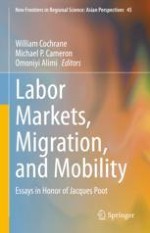2021 | OriginalPaper | Chapter
2. The Widening and Deepening of Human Capital
Author : Ian Pool
Published in: Labor Markets, Migration, and Mobility
Publisher: Springer Singapore
Activate our intelligent search to find suitable subject content or patents.
Select sections of text to find matching patents with Artificial Intelligence. powered by
Select sections of text to find additional relevant content using AI-assisted search. powered by
